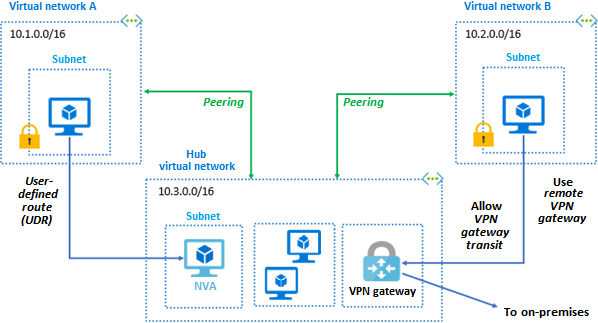Virtual network peering is used to connect two vnets to each other
There are two types of Azure virtual network peering
Regional and Global

Regional virtual network peering connects two vnets from the same region
Regional peering can be created between vnets that are in the same public region
Global virtual network peering connects two vnets located in different regions
Global peering can be done between vnets located in any region
Traffic between peering vnets is private and transits over Azure’s private backbone
Peering can be used to transfer resources between Azure subscriptions, and between Azure regions
Consider a scenario in which three virtual networks in the same region are connected via virtual network peering. Virtual network A and virtual network B each have peering with a hub virtual network. The hub virtual network contains several resources, including a gateway subnet and an Azure VPN gateway. The VPN gateway is configured to allow VPN gateway transit. Virtual network B accesses resources in the hub, including the gateway subnet, using a remote VPN gateway.

A virtual network can have only one VPN gateway
Gateway transit is supported in both regional and global peering
When VPN Gateway transit is allowed, the virtual network can communicate with resources outside the peering. In our example illustration, the subnet gateway within the hub virtual network can complete tasks such as:
Use a site-to-site VPN to connect to a local network.
Using a vnet connection – vnet